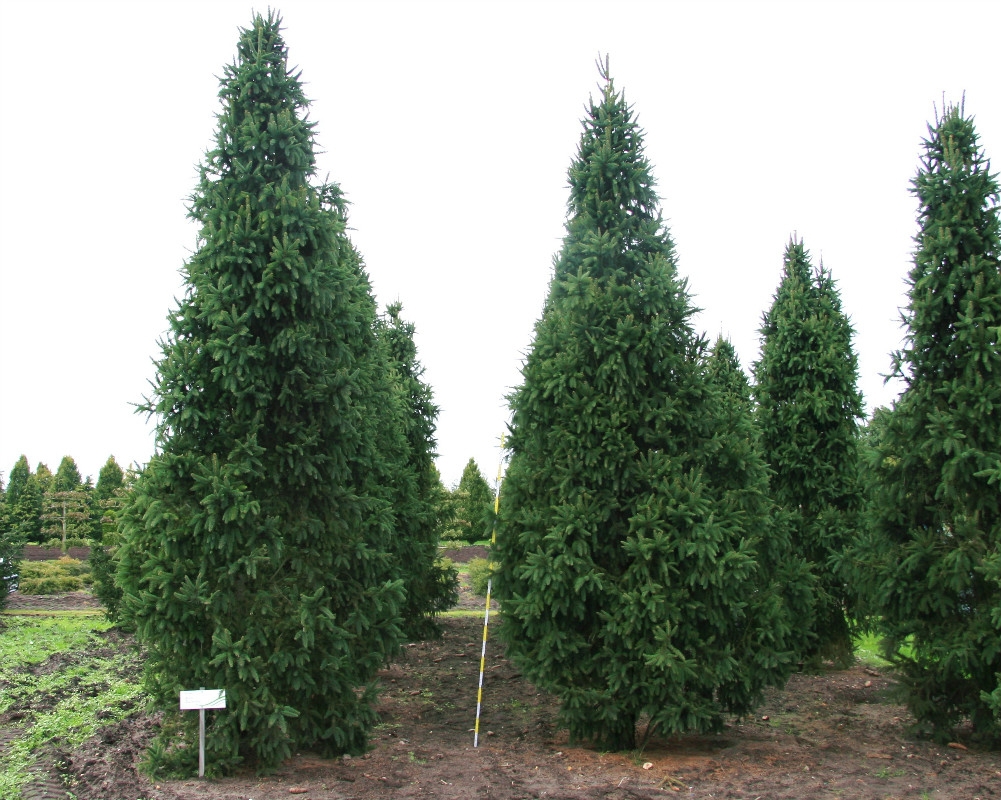Picea abies 'Columnaris'™ is used as a collective term to describe the myriad moderate- to fast-growing, narrowly conical forms of Norway spruce with dense, short, horizontal branching. Since many individual clones are implicated under this name, no precise growth data can be accurately stated. These plants have been well-known and popular throughout history. At some point taxonomists should once again formally assign these trees under a 'œform-status,' i.e. Picea abies forma columnaris. However this has not yet happened.
Henri Antoine Jacques (1782-1866) first described a plant growing at Cochet Nursery, France as Abies excelsa var. columnaris in 1853 in Annales de la Société Royale d'Horticulture de Paris. When Abies excelsa was reassigned as Picea abies in 1923, the plant was first further classified as Picea abies forma columnaris, but at some point, broken out as a cultivar. Similar plants are quite common growing in forests in Scandinavia and Switzerland and many of these selections were lumped in the 'Columnaris' cultivar name rather than given unique names. Given that, and the fact that the original plant from Cochet Nursery is either dead or unrecognizable, Picea abies 'Columnaris' makes little sense for use as a clonal designation.
